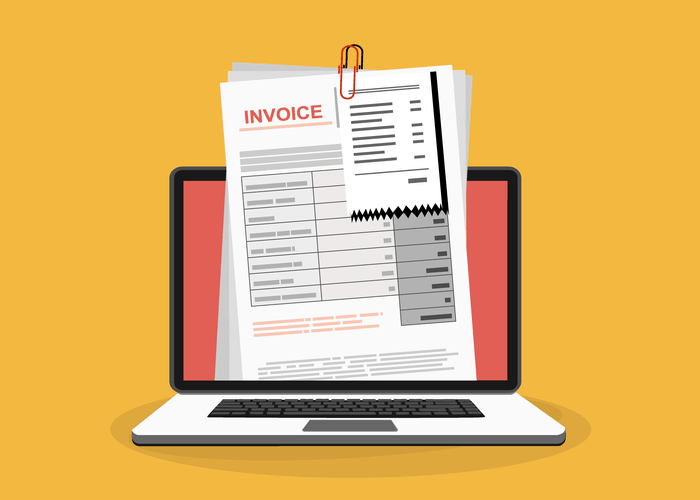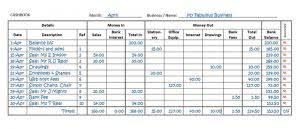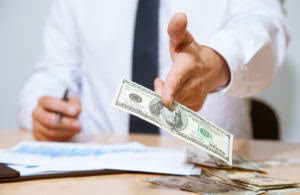And since inventory is only updated periodically, more resources are available for other areas of business. In a periodic system, all transactions conducted are listed in a purchase account for the company, which monitors inventory based on deduction of the cost of goods sold (COGS). It doesn’t, however, account for broken, damaged, or lost goods and also doesn’t typically reflect returned items. It is why physical inventories are necessary, to accurately reflect how many tangible goods are in a store or storage area. After a physical inventory count, the company determines the value of its inventory is $400,000 on March 31.
Value recently purchased inventory
- Unlike perpetual systems, which update inventory records continuously, the periodic system updates the ledger only after a physical count.
- When every unit matters, real-time tracking prevents stock discrepancies and ensures customers get the right products.
- If your business has been expanding gradually and regular inventory counts seem confusing, then you can opt for the perpetual inventory system for smooth inventory management.
- The physical inventory count is easy to complete, small businesses can estimate the cost of goods sold figures for temporary periods.
- Periodic inventory systems struggle to identify inventory trends like slow-moving or out-of-date items.
- Since inventory balance is only updated at set intervals, errors can go unnoticed if the system isn’t structured properly.
Periodic systems only require you to count inventory at a set time, which means it’s generally easier and less resource-intensive to count stock. You don’t need expensive software or to spend time getting to grips with real-time counting. If you’re using the periodic FIFO inventory system for beginning inventory and WAC for closing, you’ll end up with two completely different figures that don’t match. Sticking to the same model helps you compare apples to apples and paint a more accurate picture of how much your inventory is worth. The periodic method is commonly used by smaller businesses, retailers, and companies with relatively low transaction volumes.
Conduct Physical Stock Counts
This means that a company using this system tracks the inventory on hand at the beginning and end of that specific accounting period. The periodic inventory system also allows companies to determine the cost of goods sold. FIFO (First In, First Out) can be used with both periodic and perpetual inventory systems. In a periodic system, FIFO is applied at the end of the period, while in a perpetual system, FIFO is applied with each transaction in real time.
What is a Periodic Inventory System?
These counts are typically carried out at the end of a specific accounting period, such as a month or a year. This approach gives a broad picture of the entire inventory but lacks accurate real-time tracking. A perpetual inventory system is a complex method businesses use to maintain a real-time record of their inventory levels. Perpetual inventory systems offer continuous and automatic tracking of stock movements in contrast to periodic inventory systems, which occasionally require manual counts. Since inventory updates only happen periodically, you need to plan stock counts carefully.
Periodic and perpetual inventory systems are two different methods that businesses use to value and track their inventory. The biggest difference between the two is the timing in which the physical inventory count takes place. Periodic inventory counts happen after a specific accounting period (e.g., every week), whereas perpetual inventory counting values stock in real-time. Small businesses using this system often conduct weekly counts to spot irregularities or cycle counts to ensure important items’ stock levels. To determine the value of Cost of Goods Sold, the business will have to look at the beginning inventory balance, purchases, purchase returns and allowances, discounts, and the ending inventory balance.
There is a gap between the sale or purchase of inventory and when the inventory activity is recognized. Automatically updates and records the inventory account every time a sale, or purchase of inventory, occurs. You can consider this “recording as you go.” introduction to financial and managerial accounting The recognition of each sale or purchase happens immediately upon sale or purchase. If your business has been expanding gradually and regular inventory counts seem confusing, then you can opt for the perpetual inventory system for smooth inventory management. While periodic systems don’t update stock in real time, the software can still help you keep records of purchases and compare purchases to physical counts. The periodic inventory system refers to conducting a physical inventory count of goods/products on a scheduled basis.
When is a Periodic Inventory System Used?
In case of early payment or purchase discounts, the journal entry debits the “Accounts Payable” account and credits the “Purchase Discount” account, reflecting the reduced amount owed. If inventory changes frequently, sales volume is high, or stock errors impact your bottom line, a perpetual system is the better option. While it requires more resources, it provides the accuracy and efficiency what is a stale check needed to support growth. Explore the components, calculations, and financial implications of implementing a periodic inventory system in your business. But task can become tedious ad complicated if the quantity of inventory is very high and it also involves may types of the same.
Here, we’ll briefly discuss these additional closing entries and adjustments as they relate to the perpetual inventory system. When a purchase discount is applied under a perpetual inventory system, Merchandise Inventory decreases for the discount amount. Under a periodic inventory system, Purchase Discounts , increases for the discount amount and Merchandise Inventory remains unchanged. Well, if you are managing your inventory perpetually, all you have to do is just sit and chill because the warehouse having that jacket will get the notification about the order. It’s as simple as that since the systems are connected, and new data is flowing to each warehouse manager through an interlinked system.
Periodic Vs Perpetual Inventory System
In addition, since there are fewer physical counts of inventory, the figures recorded in the system may be drastically different from inventory levels in the actual warehouse. The periodic inventory system offers escrow agreements in merger and acquisition transactions an easy-to-use and economical method of managing inventories, ideal for small enterprises or those with limited resources. By intermittently updating inventory records rather than in real-time, companies can streamline their operational processes and reduce the administrative burden of continuous monitoring.
- This means that a company using this system tracks the inventory on hand at the beginning and end of that specific accounting period.
- COGS is calculated based on the most recent purchases at the time of the physical count, and the ending inventory consists of the older, less recent inventory.
- Inventory is listed as a current asset, and its valuation directly influences the total assets reported.
- But a company using a periodic inventory system will not know the amount for its accounting records until the physical count is completed.
- Small retail stores, seasonal businesses, and wholesale distributors find this method cost-effective and easy to use.
- While it lacks real-time tracking, it works well for companies with manageable inventory levels.
The periodic inventory system does not update the general ledger account Inventory when a company purchases goods to be resold. Rather than debiting Inventory, the company debits the temporary account Purchases. Any adjustments related to these purchases of goods will be credited to a general ledger contra account such as Purchases Discounts or Purchases Returns and Allowances. When the balances of these three purchases accounts are combined, the resulting amount is known as net purchases. Periodic inventory updates inventory records only at the end of each accounting period, typically after a physical count.
It’s ideal if you sell large volumes of low-cost goods or don’t have constant inventory movement. Retail stores, wholesalers, and smaller businesses with fewer daily transactions prefer it because it’s simple, cost-effective, and doesn’t require complex tracking software. The final step in calculating COGS is to determine the ending inventory, which is assessed through a physical count at the end of the period. The value of the ending inventory is then subtracted from the cost of goods available for sale. The resulting figure is the cost of goods sold, which reflects the direct costs attributable to the production of the goods that were sold during the period. If there is excess quantity then that may either be wasted or due to time lag, lose its value or benefit.
You have inventory discrepancies – Your records never match what’s physically in stock. By now, it’s probably pretty clear how much time you can save when you have access to real-time inventory information. But business owners benefit from closely keeping track of inventory in other ways, too. When you started your business, you likely had very different inventory management needs. Maybe you started off with a few products, and then grew into new markets and verticals. Along the way, you might have gone from keeping inventory in your garage to using a storage locker and then finally moved into your own warehouse.
Guide to Understanding Perpetual Inventory System
Unlike periodic inventory systems, which require manual stock counts at regular intervals, a perpetual system ensures your records are always accurate. Periodic inventory accounting systems are normally better suited to small businesses due to the expense of acquiring the technology and staff to support a perpetual system. A business, such as a car dealership or art gallery, might be better suited to the periodic system due to the low sales volume and the relative ease of tracking inventory manually. There are several differences in account recognition between the perpetual and periodic inventory systems.
Periodic inventory system: A complete guide for businesses
Unlike a perpetual inventory system, which updates in real time, the periodic system relies on physical stock counts to determine inventory levels. Perpetual inventory systems involve more record-keeping than periodic inventory systems, which takes place using specialized, automated software. Business types using the periodic inventory system include companies that sell relatively few inventory units each month such as art galleries and car dealerships.





